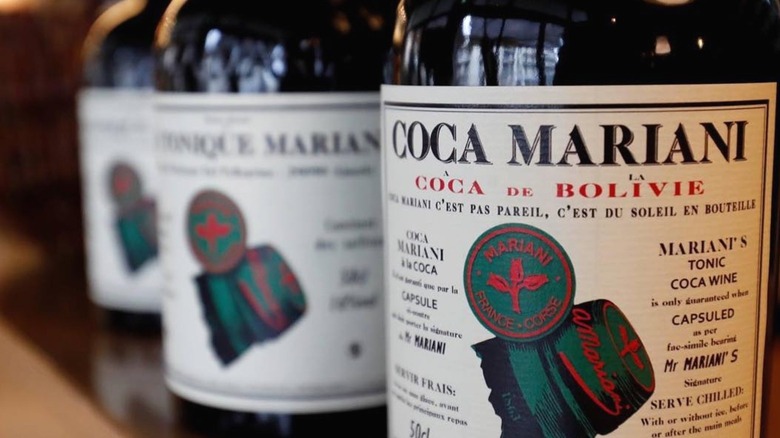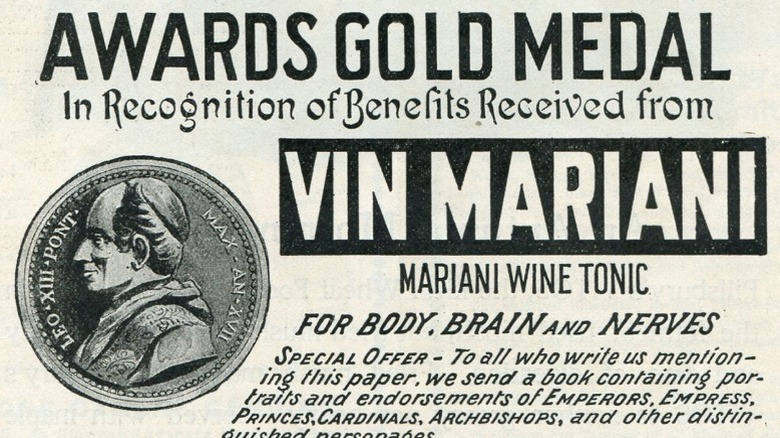When Americans Wanted A Little Cocaine In Their Wine
It's always a trip to look back in time to the days when the effects of certain drugs weren't widely understood. Back then, a doctor could prescribe you some heroin for your pesky cough, you could take amphetamines to put a little pep in your step, and — of course — you could enjoy a nice frosty Coca-Cola with real cocaine in it. While the fact that Coke used to contain cocaine is common knowledge, what's less well known is that John Stith Pemberton, the inventor of Coca-Cola, took his inspiration from a different cocaine-infused beverage: Vin Mariani.
Vin Mariani was invented by Angelo Mariani, a French chemist intrigued by the possibilities of the coca leaf. He took Bordeaux wine (well before bottles of Bordeaux were sent into space), infused it with coca leaf, and sold it as, well, almost anything he could sell it as. It helped with digestion. It helped with boosting energy levels. It helped with just about everything which is why he built such a large customer base.
Vin Mariani was hugely popular
Make no mistake: Vin Mariani was a huge deal. Thomas Edison drank it to keep himself awake while working on new inventions, and Ulysses S. Grant partook while writing his memoirs. Famous authors like Jules Verne, Henrik Ibsen, and Robert Louis Stevenson also drank it. Pope Leo XIII actually endorsed it, giving Mariani a medal as thanks for creating the drink. (Nowadays, you can't even get the Pope to go vegan, even if you offer to raise $1 million for charity.) Of course, imitative products soon sprouted up, including Pemberton's French Coca Wine. New laws against alcohol in the state of Georgia forced John Stith Pemberton to tinker with the recipe, eventually resulting in Coca-Cola being created.
As "Scarface" and "GoodFellas" teach us, however, a mighty high is inevitably followed by a great big crash. Customers began to approach coca with some skepticism, which — compounded with the increasing popularity of the Prohibition movement — was bad news for Vin Mariani's bottom line. Eventually, the brand faded into irrelevance (although it was relaunched in 2017, minus the cocaine). That being said, coca leaves remain an important part of some Latin American cultures; coca leaves are used by Bolivian chefs and coca wine remains available to purchase in the country.

